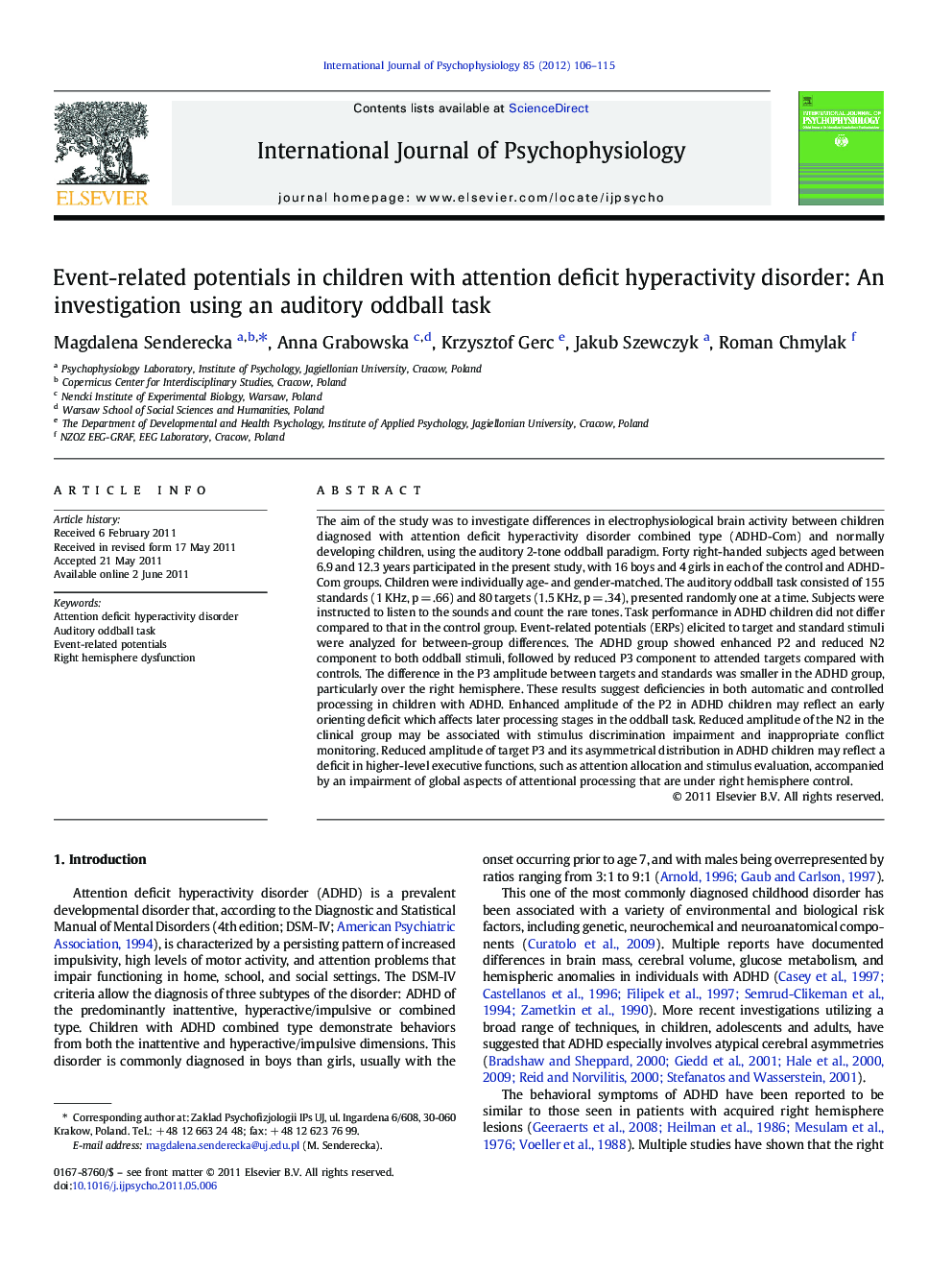| کد مقاله | کد نشریه | سال انتشار | مقاله انگلیسی | نسخه تمام متن |
|---|---|---|---|---|
| 930279 | 1474441 | 2012 | 10 صفحه PDF | دانلود رایگان |

The aim of the study was to investigate differences in electrophysiological brain activity between children diagnosed with attention deficit hyperactivity disorder combined type (ADHD-Com) and normally developing children, using the auditory 2-tone oddball paradigm. Forty right-handed subjects aged between 6.9 and 12.3 years participated in the present study, with 16 boys and 4 girls in each of the control and ADHD-Com groups. Children were individually age- and gender-matched. The auditory oddball task consisted of 155 standards (1 KHz, p = .66) and 80 targets (1.5 KHz, p = .34), presented randomly one at a time. Subjects were instructed to listen to the sounds and count the rare tones. Task performance in ADHD children did not differ compared to that in the control group. Event-related potentials (ERPs) elicited to target and standard stimuli were analyzed for between-group differences. The ADHD group showed enhanced P2 and reduced N2 component to both oddball stimuli, followed by reduced P3 component to attended targets compared with controls. The difference in the P3 amplitude between targets and standards was smaller in the ADHD group, particularly over the right hemisphere. These results suggest deficiencies in both automatic and controlled processing in children with ADHD. Enhanced amplitude of the P2 in ADHD children may reflect an early orienting deficit which affects later processing stages in the oddball task. Reduced amplitude of the N2 in the clinical group may be associated with stimulus discrimination impairment and inappropriate conflict monitoring. Reduced amplitude of target P3 and its asymmetrical distribution in ADHD children may reflect a deficit in higher-level executive functions, such as attention allocation and stimulus evaluation, accompanied by an impairment of global aspects of attentional processing that are under right hemisphere control.
Research highlights
► ADHD-Com children do not differ from controls on performance measures.
► Amplitude of target and standard P2 is enhanced in ADHD-Com children.
► Amplitude of target and standard N2 is reduced in ADHD-Com children.
► Amplitude of target P3 is reduced in ADHD-Com children.
Journal: International Journal of Psychophysiology - Volume 85, Issue 1, July 2012, Pages 106–115